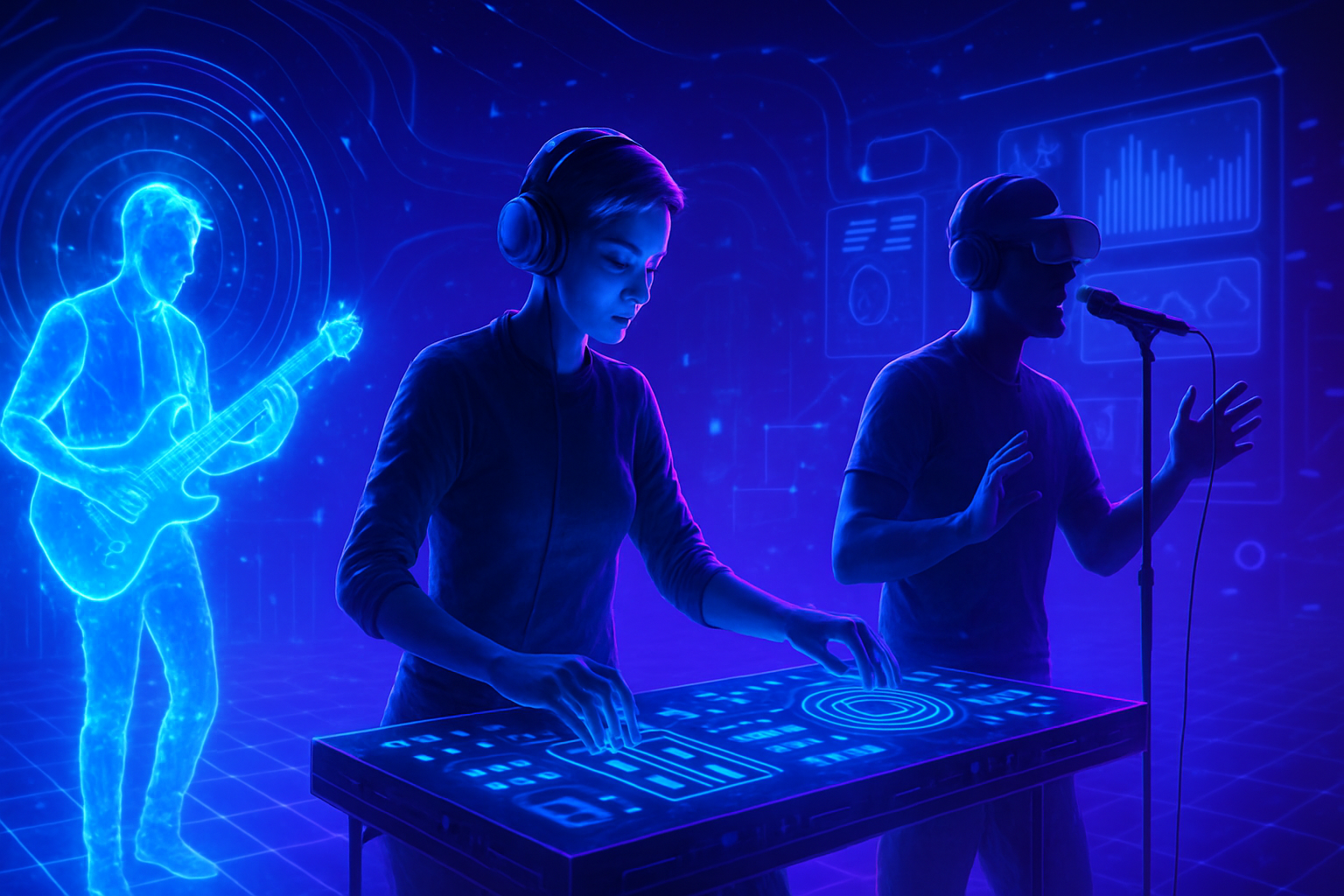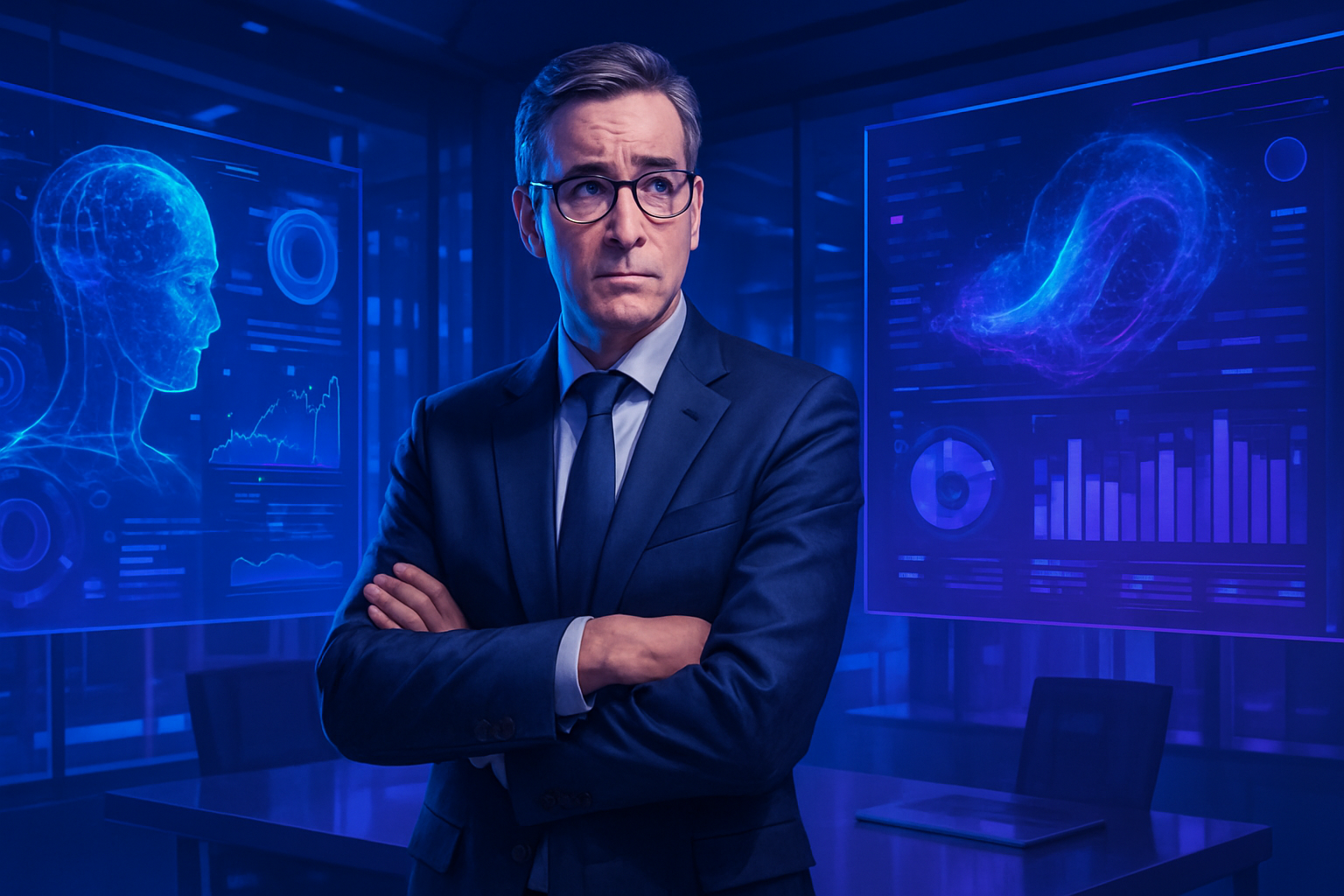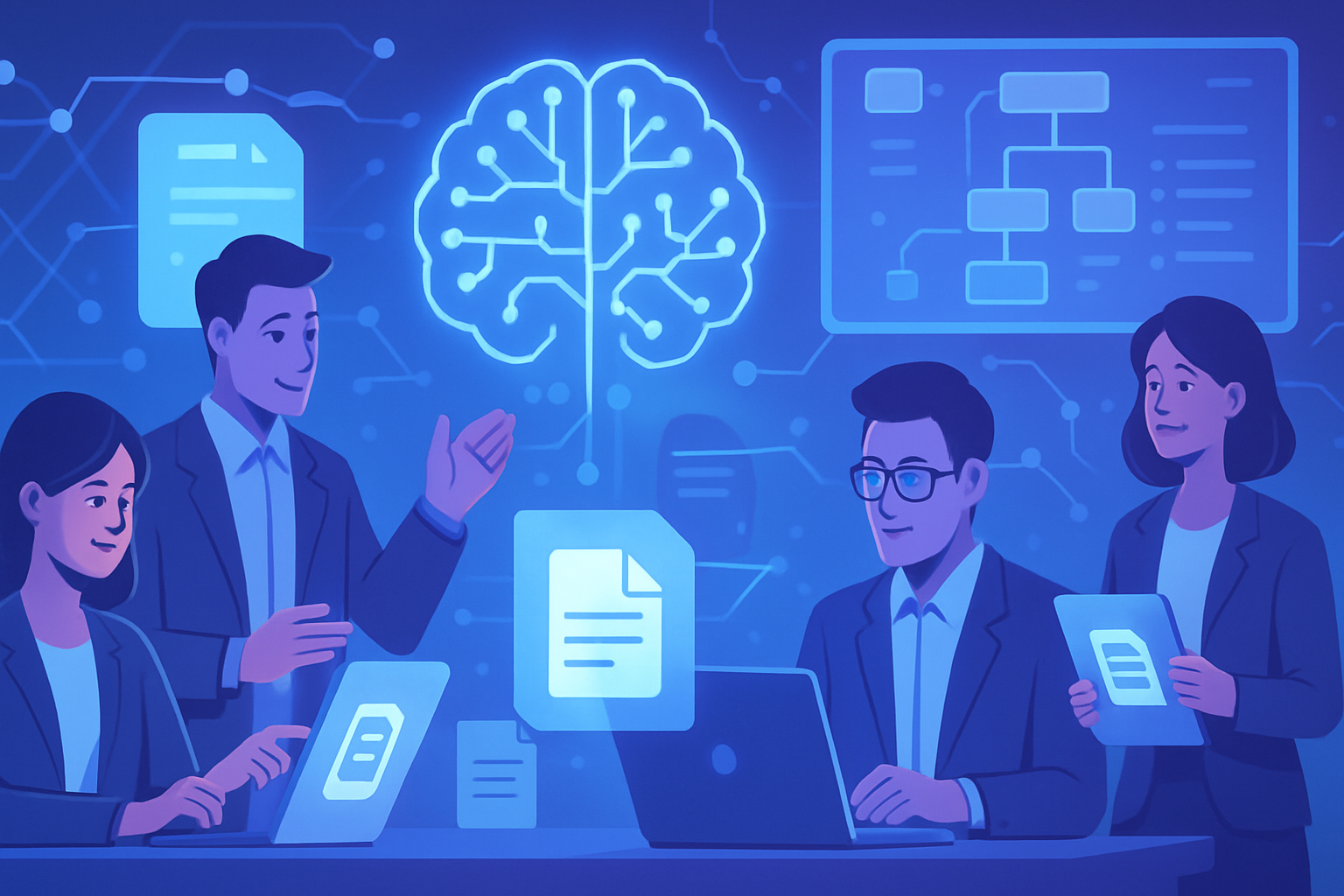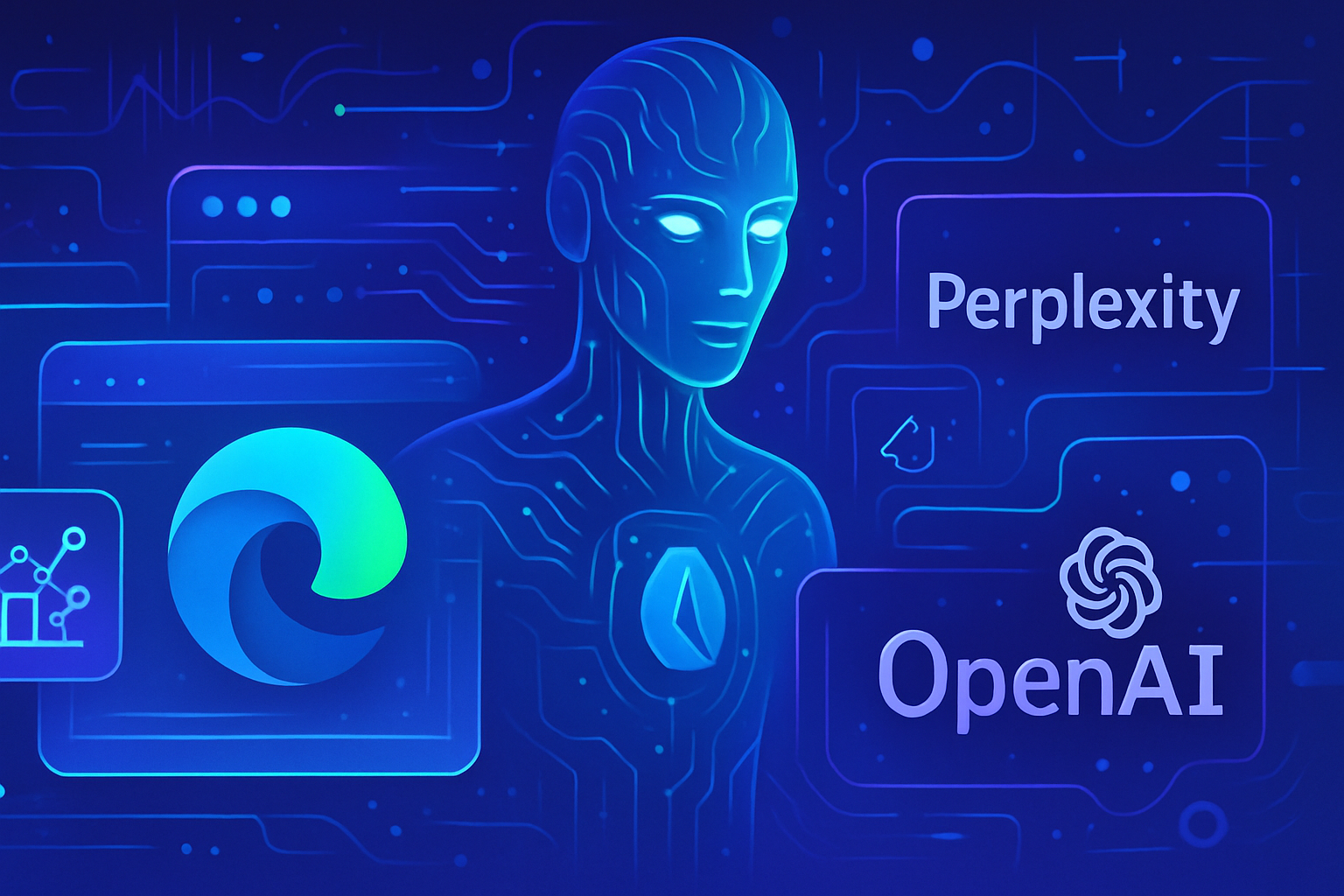“Future phases” transcends traditional boundaries by merging musical art and technology. This artistic event illustrates the convergence between *sound innovation* and *audience interaction*. _Unreleased works_ exploit avant-garde techniques and computer-assisted composition, *revealing new dimensions of creative expressions*. Each performance highlights how technology redefines the musical experience. Elevate your senses by perceiving innovative sounds, where each note evolves in time with the audience’s interactions.
A landmark event at MIT
The MIT recently hosted a significant event titled “FUTURE PHASES”, which showcased the development of musical technology and interactive performances. This evening, organized in collaboration with the musical technology and computation program, took place in the Thomas Tull concert hall, located in the new Edward and Joyce Linde Music Building. This inaugural event has set milestones in the integration of new technologies within classical performances.
World premieres and innovative selections
Among the highlights, two works took center stage. The first, “EV6”, by renowned MIT professor Evan Ziporyn, received its world premiere. The second work, “FLOW Symphony”, marked its debut in the United States, creating a palpable dynamic among participants. These compositions were accompanied by three other pieces selected by a jury, showcasing the artistic openness and diversity of musical styles presented.
A renowned orchestral ensemble
The performance was conducted by the famous ensemble A Far Cry, which captivated the audience with a passionate and nuanced interpretation of the pieces presented. The presence of this 18-member orchestra, performing works that incorporate electronic elements, was a rarity, offering a unique experience for both musicians and spectators attracted by these innovations.
Technology and immersive experience
An innovative dimension was introduced through the technologies embedded in the concert hall. This infrastructure features 24 integrated speakers to create immersive spatial sound. Each member of the audience could experience the music in a distinct way, enriching the collective experience during performances.
Interactions with the audience
One of the standout features of “EV6” is its direct interaction with the audience. Spectators had the opportunity to use their smartphones as musical instruments through an innovative system called Tutti. This concept allowed the sounds produced by the audience to harmonize with those of the live orchestra, resulting in an unprecedented sense of musical collaboration.
Technological demonstrations
After the concert, technological demonstrations were offered, showcasing the creativity of music students and researchers at MIT. Among the innovations, a machine learning system to analyze piano data and a playful interface for teaching Senegalese rhythms garnered significant interest. These demonstrations highlighted the transformative potential of musical technology.
Interdisciplinary collaborations
The musical technology and computation program extends beyond performances. It embodies an interdisciplinary approach, bringing together experts from music, technology, and the arts. The recent inclusion of renowned professors with diverse backgrounds in this initiative reflects MIT’s commitment to innovation. Anna Huang, for instance, contributed her expertise in artificial intelligence, engaging the public to rethink the possibilities of musical creation.
Influence and future perspectives
The evening of “FUTURE PHASES” clearly established MIT’s desire to elevate musical performances through the integration of technology. The works presented not only demonstrated a commitment to innovation but also sparked reflections on the future of music and creativity. The showcased achievements reinforce the idea that technology is a catalyst for evolution and reinvention in the musical realm.
Questions regarding the impact of artificial intelligence also arise in the context of intellectual property, a topic debated by figures like Elton John and Dua Lipa, thus highlighting the need to rethink established norms within the music industry.
Initiatives such as the new MIT program in musical technology and computation could transform the landscape of music education, providing students with tools to navigate this rapidly changing world. The role of academies in this revolution remains to be observed, but the prospects are exciting.
MIT continues to position itself as a pioneer of musical evolution, attracting the attention of artists, researchers, and enthusiasts beyond the traditional boundaries of music and technology, thus opening new pathways for creativity.
The transformations initiated during events like “FUTURE PHASES” reflect a strong desire to explore the new frontiers of contemporary music, through the adoption of innovative and inclusive practices, thereby transforming the experience of interactive performances.
Finally, to learn more about the revolutionary creativity made possible by artificial intelligence, it is essential to follow developments in this dynamic and captivating field.
Frequently Asked Questions
What is the “Future Phases” event?
“Future Phases” is an evening dedicated to exploring new works for string orchestra and electronics, organized by MIT’s Music, Technology, and Computation program as part of the International Conference on Electronic Music (ICMC).
How are new musical technologies integrated into the performances?
The performances incorporate elements such as synthesized sounds, real-time audio processing, and even audience participation via smartphones, allowing everyone to engage in the music collectively.
What types of compositions were presented at “Future Phases”?
Original works, including world premieres and U.S. premieres, were presented, demonstrating innovation in the field of electronic music.
How does MIT contribute to the development of musical technology?
MIT supports the development of musical technology through research programs, events like “Future Phases,” and interdisciplinary teaching between music, engineering, and computer science.
What interactive experiences are offered to spectators?
Spectators can use their phones as instruments, participate in real-time musical creation, and feel the collaborative experience of an orchestra through innovative technologies.
How does technology influence the perception of music during concerts?
Technology, such as surround sound, enhances the acoustic experience, allowing a multidimensional perception of music, where each listener can experience sound differently.
What are the benefits of using a concert hall like the Thomas Tull Concert Hall for interactive performances?
This hall is equipped with advanced technologies, including integrated speakers for immersive sound, and offers a layout that facilitates interaction between the audience and performers.
What types of projects are presented during the “Future Phases” series?
The presented projects include demonstrations of technologies in music, applications of artificial intelligence, and sound innovations, all developed by students and researchers.
What does the MIT Music, Technology, and Computation program entail?
This program aims to combine musical arts with computer science and engineering, educating students in new technologies in the musical field.
What collaborations enrich the “Future Phases” event?
Collaborations between MIT and groups like Media Lab and the A Far Cry orchestra bring diversity and expertise to performances, thereby enriching the experience for the audience.






